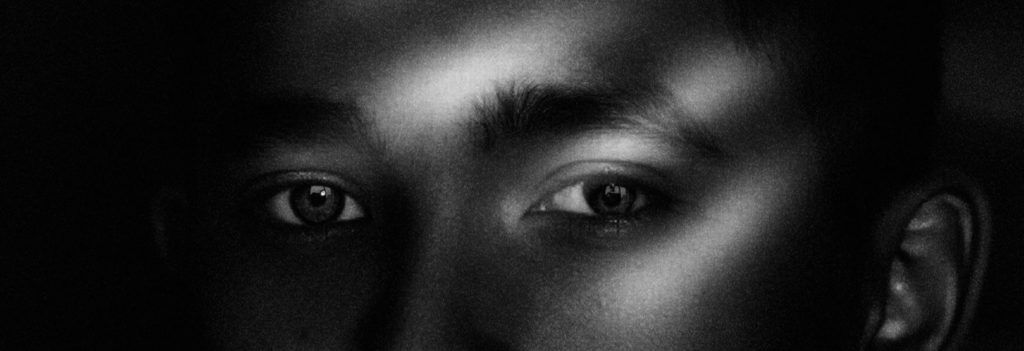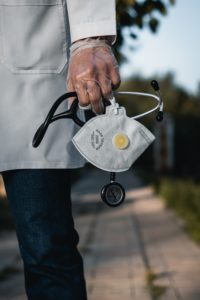Abstract
Human trafficking affects millions of individuals across the globe, and there is sufficient expert consensus to call it a humanitarian crisis in its own right. Disasters often exacerbate the vulnerabilities that make individuals prone to engaging in human trafficking or falling into slavery. Because of this, humanitarians should know what role they can play in the fight against human trafficking both at home and in the field. Traditionally, the undercover nature of trafficking and its widespread distribution across countries and social settings have made it difficult for interested parties to mount effective responses against the crime. Experts suggest that galvanizing an international response against trafficking will require increased awareness of the issue through better data gathering and sharing, readiness to respond to claims of trafficking within humanitarian crises, reducing demand for slaves, utilizing the expertise of multidisciplinary anti-trafficking task forces, and improving current legal tools to punish traffickers and protect victims.
Intersections of Humanitarianism and Human Trafficking
Humanitarian emergencies can result from conflict, socio-political instability, or natural disasters, and they make certain populations vulnerable to violations of their most basic human rights.12 Human trafficking is one such violation: a type of modern-day slavery. In its severe forms, it includes the use of force, fraud, or coercion to bring persons into unwilling servitude or bondage.3 Today, more than 25 million people are estimated to live as slaves across the globe.4 Throughout history, prevailing parties of military conflicts have made slaves of their foes. This is a tradition that continued unhindered late into the 20th century, making it necessary for the international community to legislate against slavery in the 4th article of Universal Declaration of Human Rights.52 However, even today, that has not deterred the powerful from enslaving at-risk populations in multiple ways.2 Further, individuals affected by war and natural disasters, and who lack the resources to regain stability and independence, are also more vulnerable to fall into subjugation in search of securing basic needs.672
Since the humanitarian imperative is to restore well-being and dignity to those in need, simply because of their membership within the human race, it is easy to see the link between humanitarianism and anti-trafficking efforts. Despite these clear links, the international community has been remarkably quiet and has mostly failed to champion the cause of modern slaves or offer substantial humanitarian aid. Literature that explores the intersections between human trafficking and humanitarianism is scarce.72 This article aims to highlight some salient themes regarding the relationship between humanitarian aid and modern slavery. My main objectives are to argue that human trafficking is a humanitarian crisis, highlight how trafficking happens within other humanitarian emergencies, explore the challenges associated with closing these gaps, and provide insight into ways forward.
Modern Slavery as a Humanitarian Crisis
A group of experts in humanitarianism have defined a humanitarian crisis as “a critical threat to basic human rights of a community or other large group of people, usually over a wide area. It requires a unified response from multiple actors, which may involve an international or cross-border response and can include conflict and natural disasters.”1 Although not often considered as such, the present situation of modern slavery can be reframed and further extrapolated within the margins of this definition.
The first part of the definition above deals with those who are threatened. The community affected by modern slavery consists of an estimated 25 million individuals worldwide who have been stripped of the power to assert their freedom by personal or large-scale crises.4 It is true that victims of trafficking come from numerous cultural backgrounds from all parts of the world; however, they share common experiences of vulnerability and oppression, and they face similar struggles to reintegrate into society.8 Furthermore, this demographic is homogeneously composed primarily of women and children from minority backgrounds.4 These similarities, and the qualification of the group as a community, are important to be able to instigate policies at the international level that can be targeted towards their needs.
The aforementioned definition also requires the presence of a threat to the basic rights of individuals within the community. The Universal Declaration of Human Rights clearly delineated self-determination as an inalienable human right.5 There is no question that the international community of trafficked victims meets this criterion.
Finally, the definition calls for a situation that requires the coordinated involvement of multiple stakeholders–and especially that of the international community. Human trafficking was recognized globally as “modern slavery” in 2000 with the introduction of the UN TIP Protocol, or Trafficking Protocol.9 This document required governments to criminalize trafficking and create avenues to protect the victims. This has resulted in the direct involvement of both governments and NGOs in the international humanitarian response to trafficking, although the situation is still not properly called a humanitarian crisis in most forums. Since its introduction, situations of human trafficking have seemed to increase at a steady pace,10 although it is unclear whether this trend is due solely to increased reporting. Nevertheless, international involvement helps support the case that human trafficking is a humanitarian crisis using the definition created by Delta 8.7 and delineated above.

Slavery Within Other Humanitarian Crises
Some experts argue that the closest link between humanitarianism and modern slavery is the observed trend whereby vulnerable victims are taken advantage of by traffickers. Particularly, human trafficking seems to take place in the later stages of humanitarian crises where traffickers realize their capacity to exploit vulnerable individuals.7211 Members of crisis-stricken families are prone to be forced into labor or sex services in exchange for money to meet the needs of their families.712 Persons seeking transport away from danger are more likely to accept high-risk methods causing them to be abducted or contracted into debt bondage.1 More insidiously, however, international humanitarian organizations have been found to ignore claims of sex or labor trafficking, thus becoming complicit in their perpetration.2
Certain humanitarian interventions even increase the vulnerability of individuals to fall into slavery.113 McQuade (2021) notes, from personal experience, that in the procurement of resources for aid there is danger of sponsoring industries that rely on modern slavery to produce the needed goods.
As another example, according to the United States Trafficking in Persons Report of 2018, orphanages created with the intention of providing food, shelter, and education to children experiencing humanitarian emergencies often create environments that undermine the psychosocial development of children, thereby making them easy prey for traffickers. The report further asserts that other similar institutions fall to heinous practices, like forcing children into labor, sexual services, arranged marriages, or using children to extort their families.14
Finally, experts note that another connection between humanitarianism and trafficking is the influence of military forces during such emergencies. Armies are known to abuse their power to submit innocent civilians into slavery. In wartorn countries, children and adults are indiscriminately forced to serve in the military or sold as slaves to finance or otherwise support war efforts.11 On the other hand, security forces linked to humanitarian aid have, in the past, used their position to create networks of sexual exploitationm thus taking advantage of the very persons the international community sent them to protect.1
Challenges in Extending Aid to Victims
Many challenges contribute to the relative inaction of the international community towards human trafficking as compared to other humanitarian crises. Some of the most commonly cited reasons include the covert nature of the crime, inaccessibility to reliable data with which to plan interventions, wide geographic distribution of victims, lack of effective methods to fight human trafficking, and no political will on the part of disinterested governments and NGOs.315
Because human trafficking is most often a deliberately committed crime, traffickers use whatever means are available to conceal their activities and avoid detection by police or migration control entities.16 ((Diaz, M., Huff-Corzine, L., & Corzine, J. (2020). Demanding Reduction: A County-level Analysis Examining Structural Determinants of Human Trafficking Arrests in Florida. Crime & Delinquency. https://doi.org/10.1177/0011128720962710)) This problem is compounded, because many victims of trafficking, particularly those seeking refuge in foreign countries, fear detection by law enforcement. In truth, law enforcement across the globe–particularly in developed countries–has been quick to prosecute victims of trafficking for illegal immigration or for crimes they have been forced to commit under bondage. What is more, traffickers groom their victims to avoid any contact with authorities by leveraging these fears.16 ((Diaz, M., Huff-Corzine, L., & Corzine, J. (2020). Demanding Reduction: A County-level Analysis Examining Structural Determinants of Human Trafficking Arrests in Florida. Crime & Delinquency. https://doi.org/10.1177/0011128720962710)) Therefore, the few governments and NGOs that do show interest in joining the fight against trafficking find themselves unable to obtain accurate information as to where these cases exist or who the perpetrators are.11
Data is scarce, but trends suggest that the crime has a tendency to happen in places where migration is high and informal employment settings lack governmental oversight.17 ((Hoque, M. (2021). Forced Labour and Access to Education of Rohingya Refugee Children in Bangladesh: Beyond a humanitarian crisis. Journal of Modern Slavery, Slavery and Humanitarian Response Supplemental. 6(3)7-18. https://doi.org/10.22150/jms/ILNS6045)) Unfortunately, in many countries, like Bangladesh, it is still acceptable for children to work in unregulated environments. In these countries, child labor couples with poor laboral oversight to create situations of exploitation.15 These situations of exploitation can develop even when employers do not have the direct intention of enslaving their personnel. In fact, sometimes individuals willingly enter into unfair laboral arrangements, because they see them as their only option to survive.15
Given the wide distribution of victims of trafficking throughout the world, policies aimed at providing relief can only be implemented homogeneously at the international level through bodies such as the United Nations. The result is that as the initiatives trickle down through different governments and branches of governments to local agencies, their implementation varies substantially from one location to the next.3 This is a double-edged blade. On one hand, it allows for policies to be adjusted to the context of each local situation; on the other, it also allows for key priorities to be shifted or ignored altogether and for a general lack of homogeneity that confuses victims and aid workers alike. This complexity is further deepened when policy makers try to tailor their interventions to the different types of slavery (i.e., labor, sex, and debt bondage), because each of them requires a completely different approach.
Avenues to Fight Human Trafficking
Fighting Slavery Within Humanitarian Emergencies
A clear path for galvanizing an international humanitarian response against human trafficking remains elusive. Most of the literature focuses on how to reduce it at large, and few of the proposed strategies mention the involvement of humanitarian organizations at all. This section looks at both the response to modern slavery within other humanitarian crises and the potential role for humanitarian organizations in fighting trafficking as a humanitiarian crisis in itself.
Provisions to reduce the risk of trafficking should be included early in the planning of any humanitarian response.1872 This calls for an augmented awareness among responders of the realities of human trafficking that can only be achieved through improved education and training of humanitarian workers before their deployment. This should be accompanied by the creation of clear channels for humanitarian workers in the field to report suspicions of human trafficking in full trust that their concerns will be addressed.2 In addition, humanitarian organizations should take advantage of their regular needs assessments19 to actively ask their beneficiaries whether they know of any behaviors that could constitute intent of exploitation. In the delivery of humanitarian aid, care should also be taken to avoid sponsoring local industries that depend on forced or child labor. Finally, security forces of any kind assigned to aid duties should always be under the control of civilians; their involvement should be limited to the initial stages of a humanitarian response whenever possible.20 this is to avoid their entrenchment in power and eventual corruption that, previously, has facilitated human trafficking.
Fighting Human Trafficking at Large
Outside of other humanitarian crises, tackling modern slavery has received more attention by the international community. Perhaps the most commonly cited strategy in the literature is that of demand reduction.21 The idea is to crack down on businesses where trafficking is likely to fester–such as strip clubs, massage establishments, brothels, and migrant agriculture–to reduce the incentive traffickers have to enslave individuals.2223 This is a common sense form of primary prevention that attempts to reduce risk; it has been shown to be more effective than downstream interventions, like focusing on criminalizing exploitation and using victim testimonies to convict traffickers, which was the initial approach most governments adopted after the introduction of the UN TIP Protocol.3
Another commonly cited strategy is the formation of local anti-trafficking coalitions composed of multidisciplinary teams. The idea here is to recruit individuals from different backgrounds, such as police, attorneys, social workers, healthcare professionals, and survivors of trafficking, to inform policy making and create interagency cooperation for information sharing, prosecution of traffickers, and providing relief to victims. There is evidence that, at least in the United States, the presence of these task forces has increased human trafficking related arrests. ((Brinkley, J. L. (2019). A Path Forward: Florida’s Efforts to Combat Human Trafficking. SCL Rev., 71, 639. https://dx.doi.org/10.2139/ssrn.3542899))24 One creative way to implement this in international humanitarian missions is to attach a multidisciplinary anti-trafficking task force to join other humanitarian workers in the field during every major humanitarian response.
Finally, and perhaps most importantly, experts are calling for more serious commitments by governments worldwide in creating more encompassing laws that include provisions for all forms of human trafficking, expand the protections for victims, and create safe environments for accurate reporting, data collection, and sharing. ((Brinkley, J. L. (2019). A Path Forward: Florida’s Efforts to Combat Human Trafficking. SCL Rev., 71, 639. https://dx.doi.org/10.2139/ssrn.3542899))25 ((Wieltshing, P., Muraskiewicz, J. & Fenton, T. (2021) Without Data We Are Fighting Blind: The need for human security data in defence sector responses to human trafficking. Journal of Modern Slavery, Slavery and Humanitarian Response Supplemental. 6(3)7-18. https://doi.org/10.22150/jms/ILNS6045))
Despite the current disconnect between the growing humanitarian crisis of modern slavery and the general disinterest from the international community to fight against it, humanitarian workers are not entirely without tools to address the crime. This article has identified situations in which humanitarian workers should focus their surveillance efforts to detect and report the exploitation when they encounter it. Salient among these circumstances are both the preparatory and chronic stages of disaster responses, while soliciting resources to provide aid in countries where informal forms of labor are rampant, and when military forces are involved in humanitarian response for a prolonged period. The fighting can take the form of increasing education for humanitarian workers, increasing surveillance during disasters, creating formal channels of reporting, reducing military involvement in later stages of crisis response, making use of multidisciplinary anti-trafficking task forces in high risk settings, and expanding the legal tools that facilitate the prosecution of traffickers and the protection of victims.
- Current State of Global Health Security - August 29, 2023
- Intersections of Humanitarianism and Human Trafficking - October 27, 2022
- Disasters and Their Impact on Children – Part 2 - July 27, 2022
- Delta 8.7. (2021). Delta 8.7 Crisis Policy Guide. United Nations University, Center for Policy Research. http://collections.unu.edu/eserv/UNU:8065/Delta87_CrisisPolicyGuide.pdf [↩] [↩] [↩] [↩] [↩]
- McQuade, A. (2021) Older Than Troy: Slavery as a consequence of human catastrophe. Journal of Modern Slavery, Slavery and Humanitarian Response Supplemental. 6(3)1-6. https://doi.org/10.22150/jms/ILNS6045 [↩] [↩] [↩] [↩] [↩] [↩] [↩] [↩] [↩]
- Diaz, M., Huff-Corzine, L., & Corzine, J. (2020). Demanding Reduction: A County-level Analysis Examining Structural Determinants of Human Trafficking Arrests in Florida. Crime & Delinquency. https://doi.org/10.1177/0011128720962710 [↩] [↩] [↩] [↩]
- International Labour Organization. (2017). Global Estimates of Modern Slavery: Forced Labour and Forced Marriage. Retrieved from https://www.ilo.org/wcmsp5/groups/public/—dgreports/—dcomm/documents/publication/wcms_575479.pdf [↩] [↩] [↩]
- United Nations General Assembly (1948). Universal declaration of human rights. UN General Assembly, 302(2), 14-25. [↩] [↩]
- Bales, K. (2021) What is the Link between Natural Disasters and Human Trafficking and Slavery? Journal of Modern Slavery, Slavery and Humanitarian Response Supplemental. 6(3)7-18. https://doi.org/10.22150/jms/ILNS6045 [↩]
- Curbelo, V. (2021) Exploring the Relationship Between Humanitarian Emergencies and Human Trafficking: A narrative review. Journal of Modern Slavery, Slavery and Humanitarian Response Supplemental. 6(3)7-18. https://doi.org/10.22150/jms/ILNS6045 [↩] [↩] [↩] [↩] [↩]
- Bearup, L.S. (2016), Reintegration as an Emerging Vision of Justice for Victims of Human Trafficking. Int Migr, 54: 164-176. https://doi.org/10.1111/imig.12248 [↩]
- United Nations Human Rights Office of the High Commissioner (2000, November 15) Protocol to Prevent, Suppress and Punish Trafficking in Persons Especially Women and Children: Supplementing the United Nations Convention against Transnational Organized Crime. https://www.ohchr.org/en/professionalinterest/pages/protocoltraffickinginpersons.aspx [↩]
- National Human Trafficking Resource Center. (n.d.) National Human Trafficking Hotline. Retrieved from https://humantraffickinghotline.org/states [↩]
- Wieltshing, P., Muraskiewicz, J. & Fenton, T. (2021) Without Data We Are Fighting Blind: The need for human security data in defence sector responses to human trafficking. Journal of Modern Slavery, Slavery and Humanitarian Response Supplemental. 6(3)7-18. https://doi.org/10.22150/jms/ILNS6045 [↩] [↩] [↩]
- Hoque, M. (2021). Forced Labour and Access to Education of Rohingya Refugee Children in Bangladesh: Beyond a humanitarian crisis. Journal of Modern Slavery, Slavery and Humanitarian Response Supplemental. 6(3)7-18. https://doi.org/10.22150/jms/ILNS6045 [↩]
- Van Doore, K.E., & Nhep, R. (2021) Providing Protection or Enabling Exploitation? Orphanages and modern slavery in post-disaster contexts. Journal of Modern Slavery, Slavery and Humanitarian Response Supplemental. 6(3)7-18. https://doi.org/10.22150/jms/ILNS6045 [↩]
- United States Department of State. (2018). United States Trafficking in Persons Report https://www.state.gov/wp-content/uploads/2019/02/283784.pdf [↩]
- Hoque, M. (2021). Forced Labour and Access to Education of Rohingya Refugee Children in Bangladesh: Beyond a humanitarian crisis. Journal of Modern Slavery, Slavery and Humanitarian Response Supplemental. 6(3)7-18. https://doi.org/10.22150/jms/ILNS6045 [↩] [↩] [↩]
- Dell, N., Maynard, B., K., B., Wagner, E., Atkins, B., & House, W. (2019). Helping survivors of human trafficking: a systematic review of exit and postexit interventions. Trauma,Violence & Abuse, 20(2), 183-196. https://doi.org/10.1177%2F1524838017692553 [↩] [↩]
- Bryant-Davis, T., & Tummala-Narra, P. (2017). Cultural oppression and human trafficking: exploring the role of racism and ethnic bias. Women & Therapy, 40(1-2), 152-169. https://doi.org/10.1080/02703149.2016.1210964 [↩]
- Bales, K. (2021) What is the Link between Natural Disasters and Human Trafficking and Slavery? Journal of Modern Slavery, Slavery and Humanitarian Response Supplemental. 6(3)7-18. https://doi.org/10.22150/jms/ILNS6045 [↩]
- Emergency Preparedness and Disaster Relief Coordination Program. (1999). Humanitarian Assistance in Disaster Situations: A guide for effective aid. Pan American Health Organization https://www.paho.org/disasters/dmdocuments/pedhumen.pdf [↩]
- Trajano, J. C. I. (2016). Building resilience from within: Enhancing humanitarian civil-military coordination in post-Haiyan Philippines. S. Rajaratnam School of International Studies. [↩]
- Vogel, D., & Cyrus, N. (2017). Demand reduction in anti-trafficking debates. ERA Forum, 18(3), 381-396. https://doi.org/10.1007/s12027-017-0481-4 [↩]
- Brinkley, J. L. (2019). A Path Forward: Florida’s Efforts to Combat Human Trafficking. SCL Rev., 71, 639. https://dx.doi.org/10.2139/ssrn.3542899 [↩]
- Penwill, A. (2013). H-2A Guestworker Visa Program: Facilitator of exploitation and labor trafficking in the US ranching industry. Journal of Public & International Affairs. [↩]
- Huff-Corzine, L., Sacra, S.A., Corzine, J., & Rados, R. (2017) Florida’s task force approach to combat human trafficking: An analysis of county-level data, Police Practice and Research, 18:3, 245-258. https://doi.org/10.1080/15614263.2017.1291567 [↩]
- Hall, A. T. (2014). The Uniform Act on Prevention of and Remedies for Human Trafficking. SSRN Electronic Journal. https://dx.doi.org/10.2139/ssrn.2561785 [↩]




